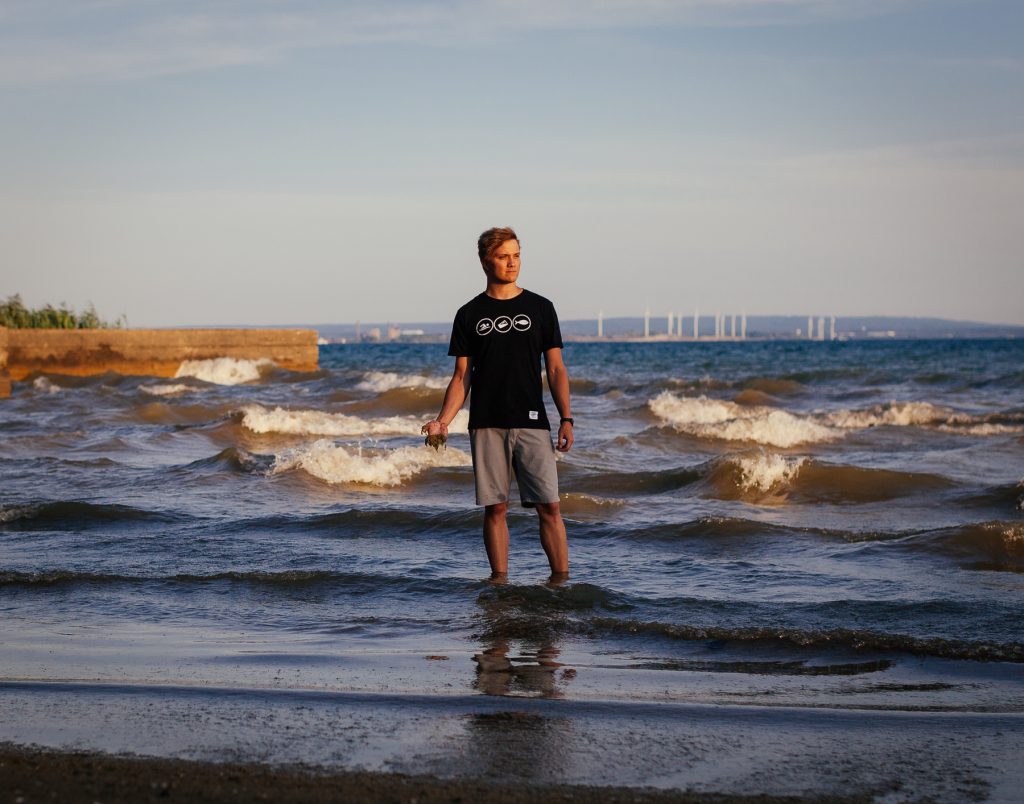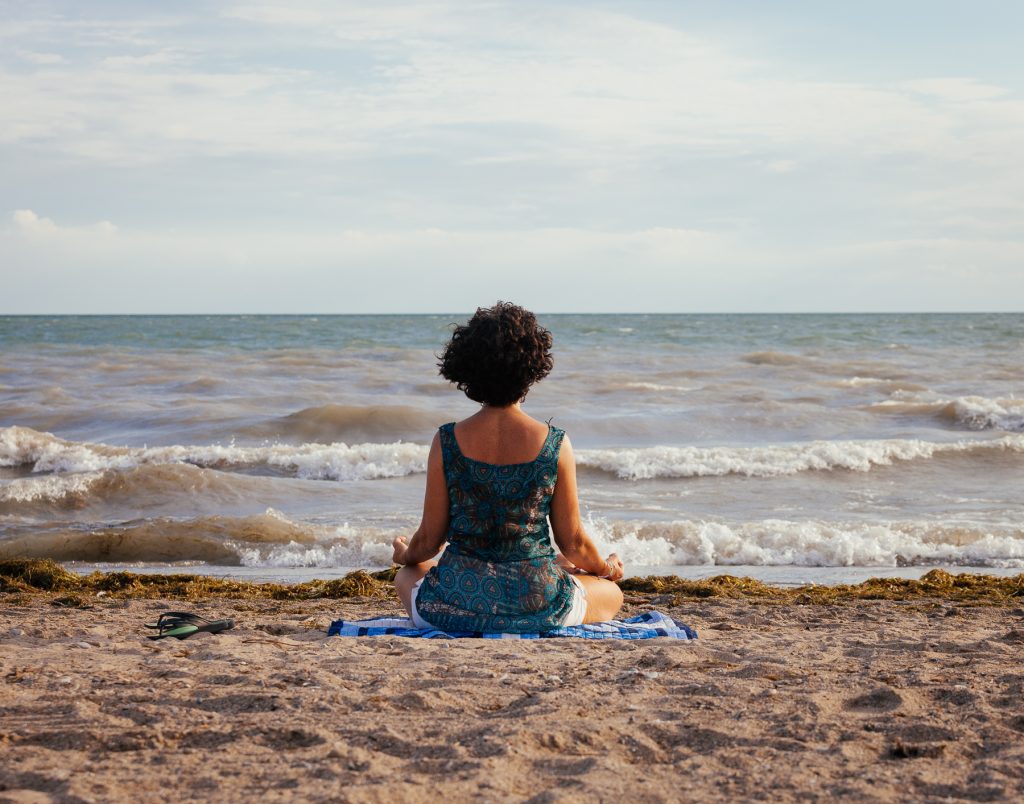Fred grew up in Port Colborne in the 1960s, and Lake Erie was the focal point of Fred's youth.
MEET THE PEOPLE
- Patricia – Pelee Island
- Heidi – Pigeon Bay
- Carrie Ann and Janne – Leamington
- Lisa – Leamington
- Mohamad – Leamington
- Sandra – Leamington
- Anthony – Kingsville
- Todd – Wheatley
- Ken – Shrewsbury
- Michelle – North Buxton
- Todd – Port Stanley
- Julia – Stratford
- Nandita – Waterloo
- Charlie – Guelph
- Mat & Melissa – Norfolk County
- John & Jan – Long Point
- Holly – St. Williams
- Gregary – Niagara
- Fred – Port Colborne
- Robin – Oshawa
Fred – Port Colborne
Story and images by Colin Boyd Shafer

Fred was named after his grandfather who worked as a police officer in Wales. In 1910, his grandfather moved to Canada and eventually ended up becoming Port Colborne, Ont.’s chief of police.

Fred's grandfather's "bobby hat" on his grave at the Oakwood Cemetery. Most of Fred's family members are buried here, including his parents, aunts, and uncles.
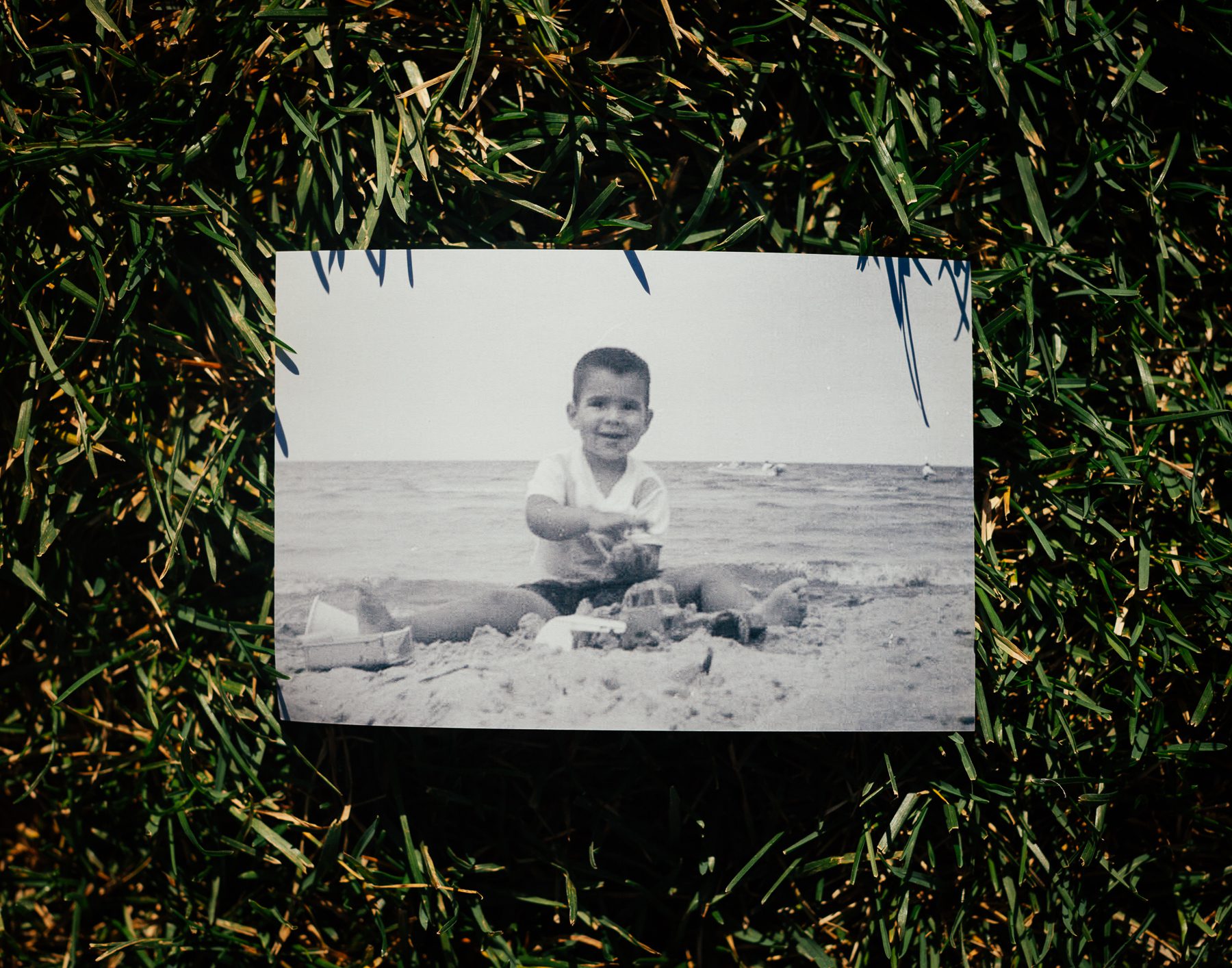
Fred, in 1962, playing on the beach in Port Colborne.
"If you grew up in Port Colborne, you spent your time on the lake."
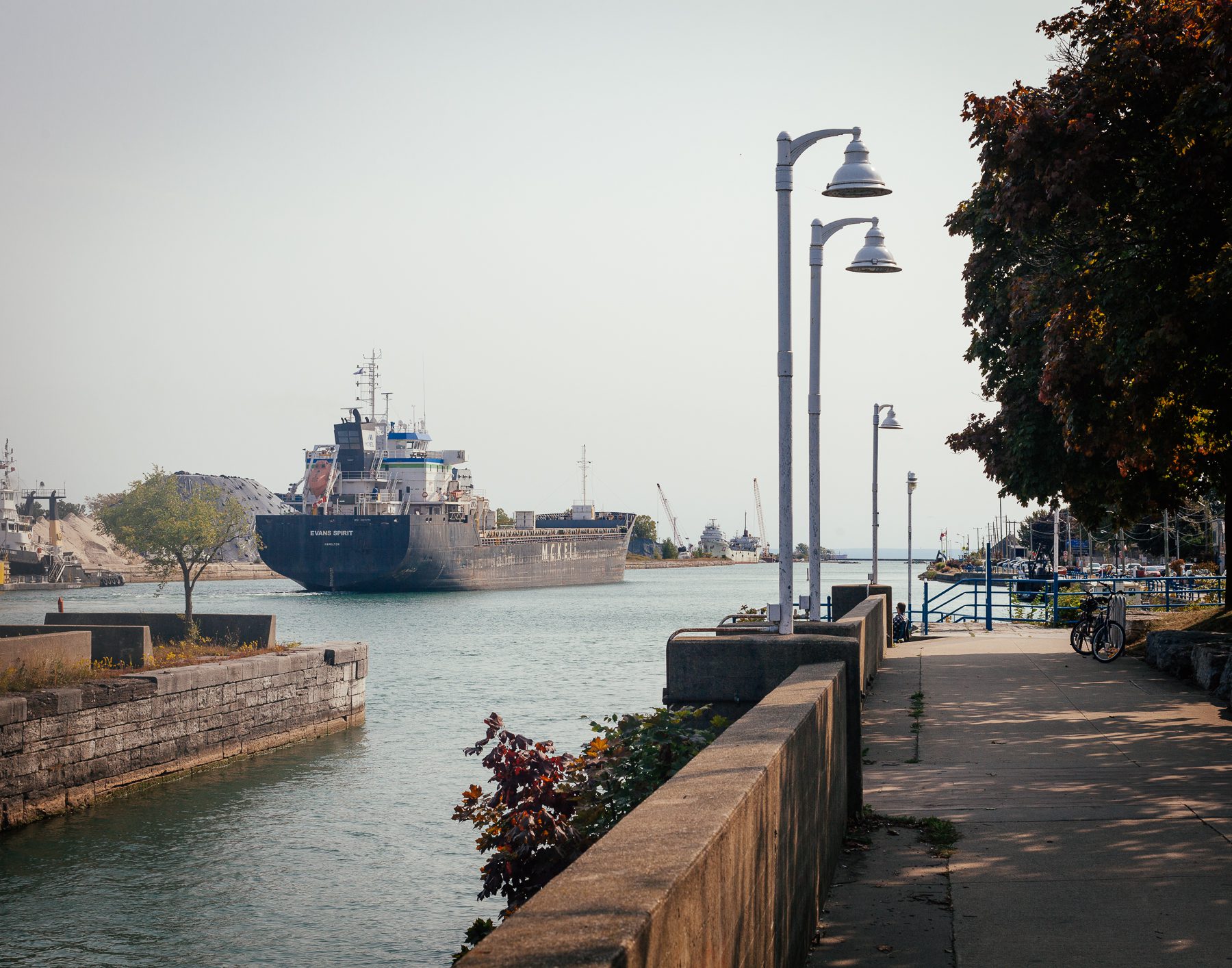
The Welland Canal, which connects Lake Ontario to Lake Erie, is a big part of Port Colborne’s identity. When Fred was a boy, he remembers how the community’s motto was “Port Colborne: site of the world’s longest locks.” While it is no longer the longest, it’s importance to the community has not changed.

Fred on Nickel Beach in 1987 photographed for a Port Colborne marketing campaign. They were trying to promote the idea, in a comedic way, that the city’s lakeshore is where "business and lifestyle are a perfect match."
In the 1970s, manufacturing jobs in Port Colborne “went away and never came back.” As the town’s economic development officer in the mid-1980s, Fred was part of an ambitious effort to take Port Colborne from a crashed industrial economy to a thriving recreational economy. This shift is still a work in progress, but the one consistent factor has been the lake.
“Lake Erie is Port Colborne’s strategic advantage.”
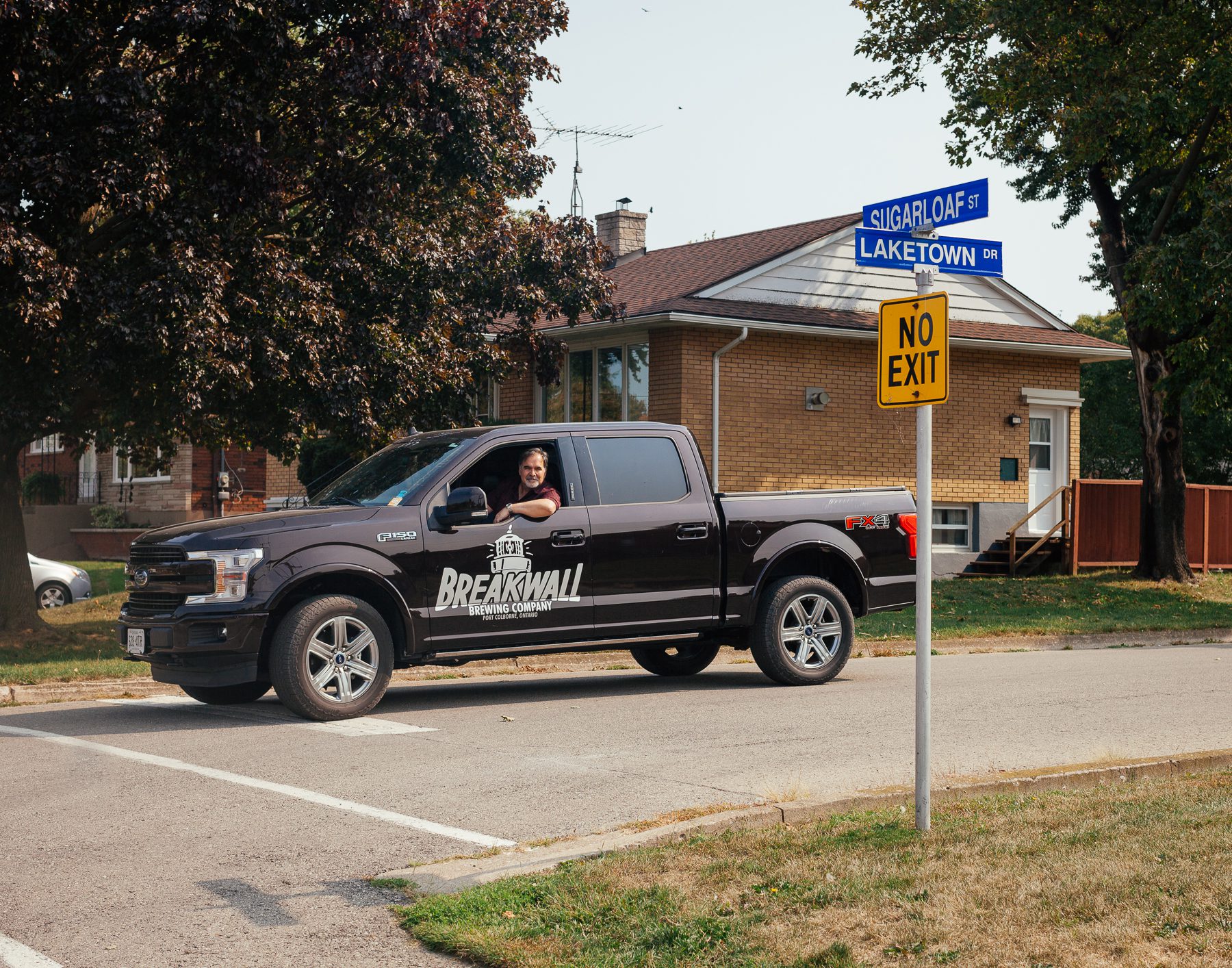
Fred on the road leading to the subdivision, Lakeside Place, that he built in the late 80s.
Fred and his wife Monica have opened several restaurants together over the years but noticed Port Colborne lacked a brewery. Fred’s son Conrad knew the beer business, so, in 2018, they opened their family brewery.
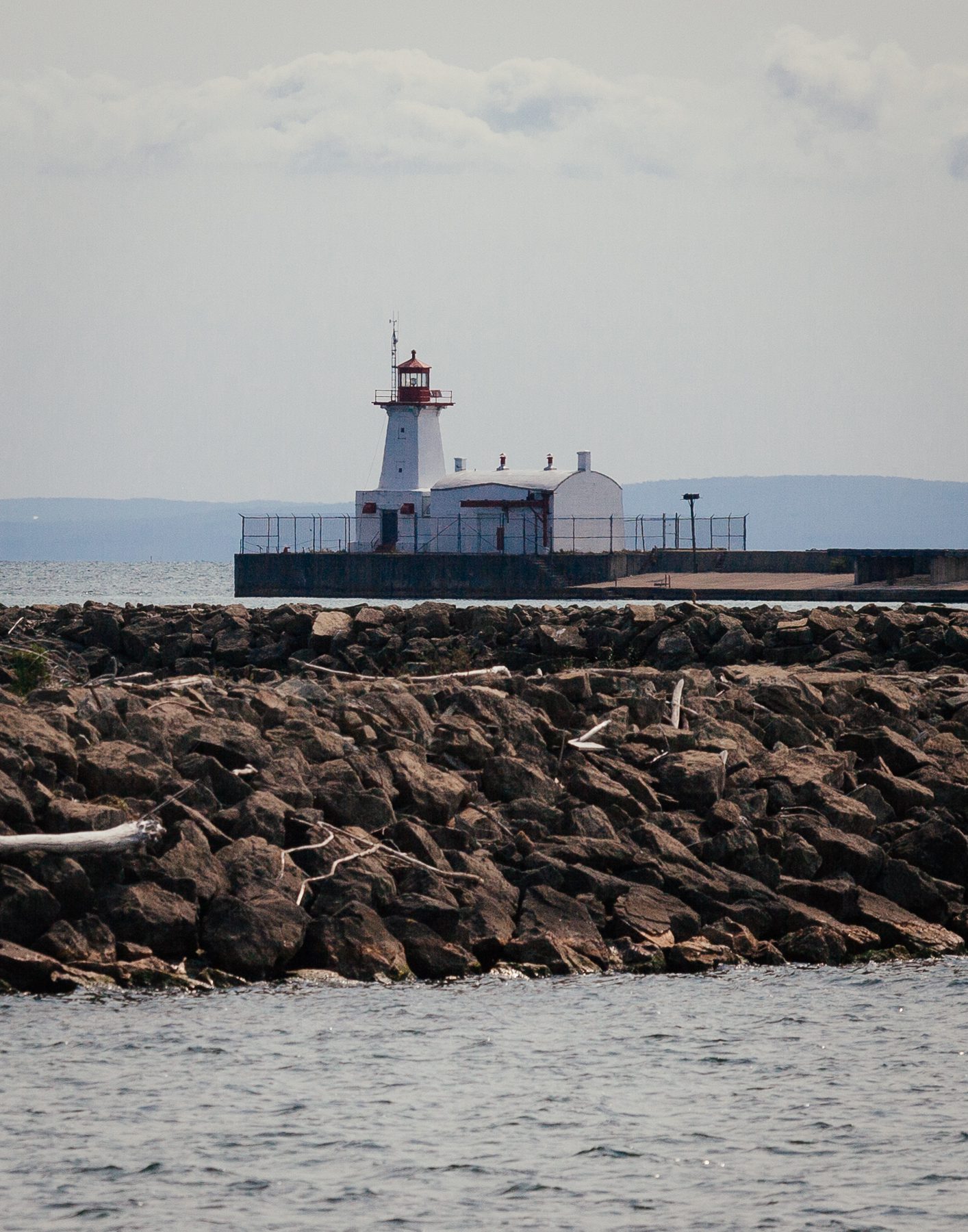
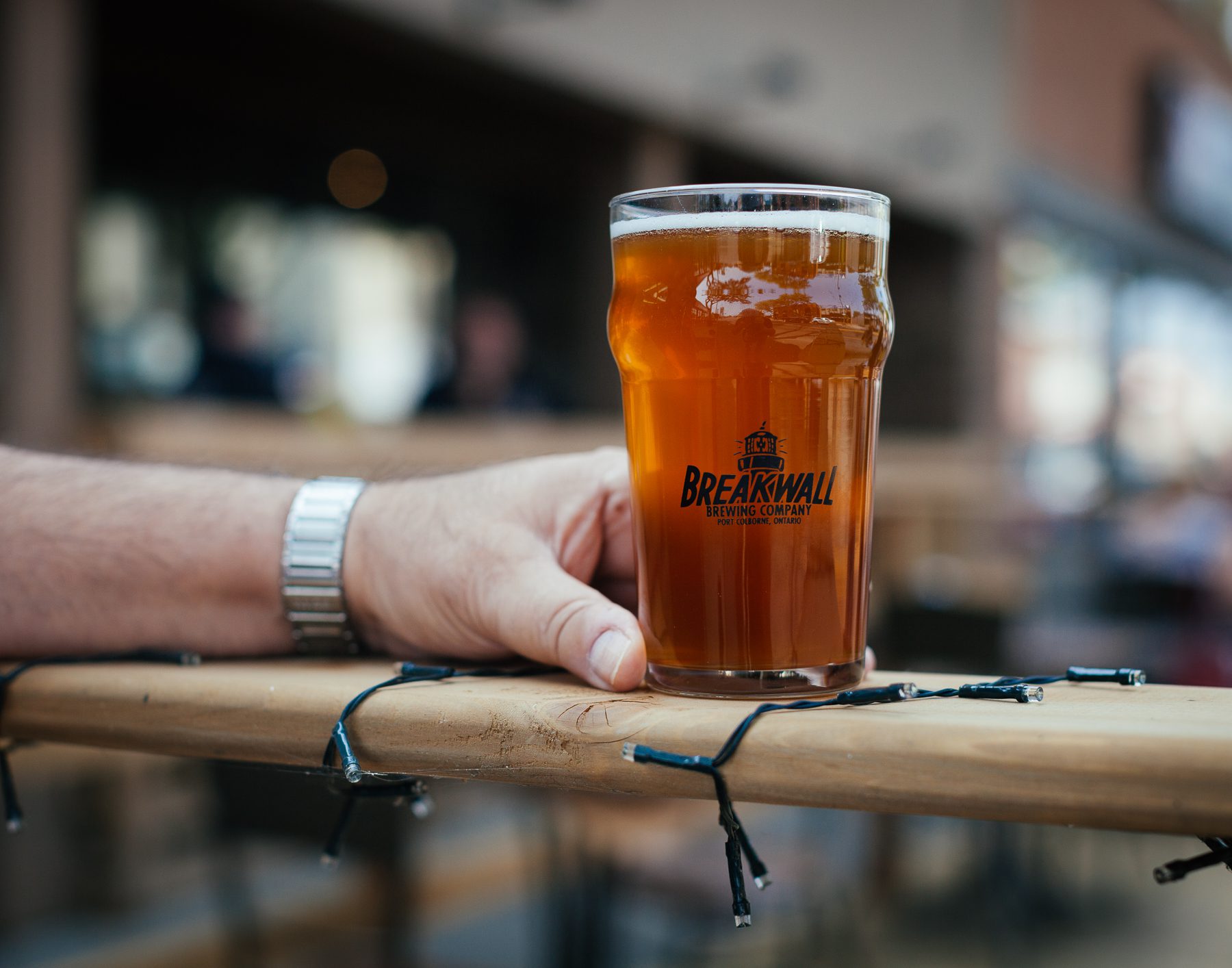
Breakwall Brewery gets its name from the breakwall (breakwater) in Gravely Bay that protects Port Colborne’s harbour. One of Fred’s fondest memories from his youth is learning how to waterski around that breakwall.
The brewery has a deep connection to Fred’s family and the area’s history. Cronmiller & White Brewing & Malting Company was Port Colborne’s most significant employer in the early 1900s. But in 1919, on the eve of prohibition, after delivering beer by horse to local establishments, police arrested Cronmiller & White’s employees. Fred’s grandfather was one of the officers there that night of the arrest. Subsequently, they charged the business with bootlegging and fined it thousands of dollars (a massive sum of money at the time). The brewery tried reopening after prohibition but could never recover.

With Breakwall Brewery, Fred registered to use the trade name Cronmiller & White Brewing & Malting Company. Every year, Breakwall Brewery produces a few select beers under the old name to pay homage to this history. Many descendants of the Cronmillers and Whites have visited Fred’s brewery, and recently, they even had a family reunion at the brewery.
“I jokingly say I’m honouring the Cronmiller & White Brewery because my grandfather threw them in jail!”

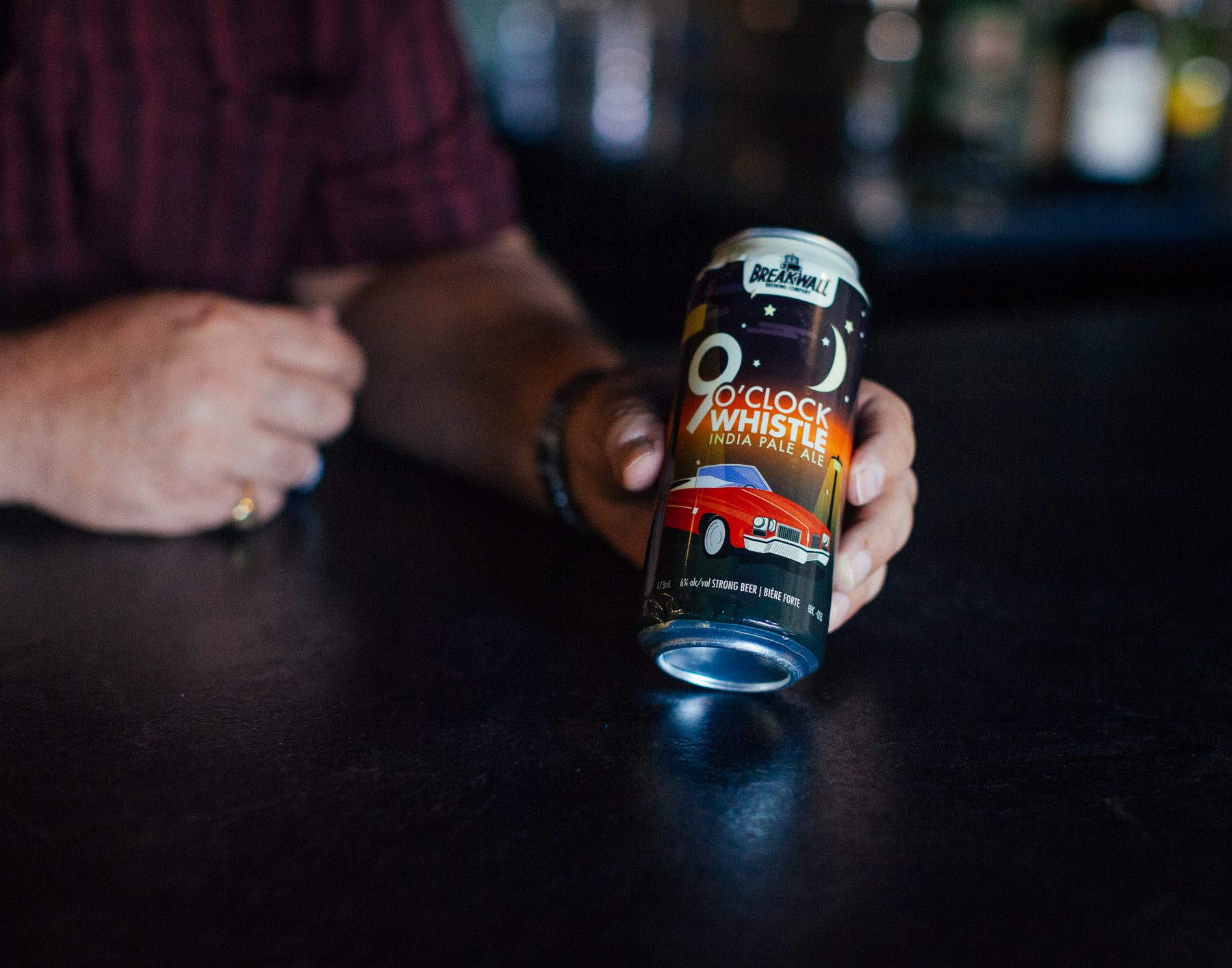
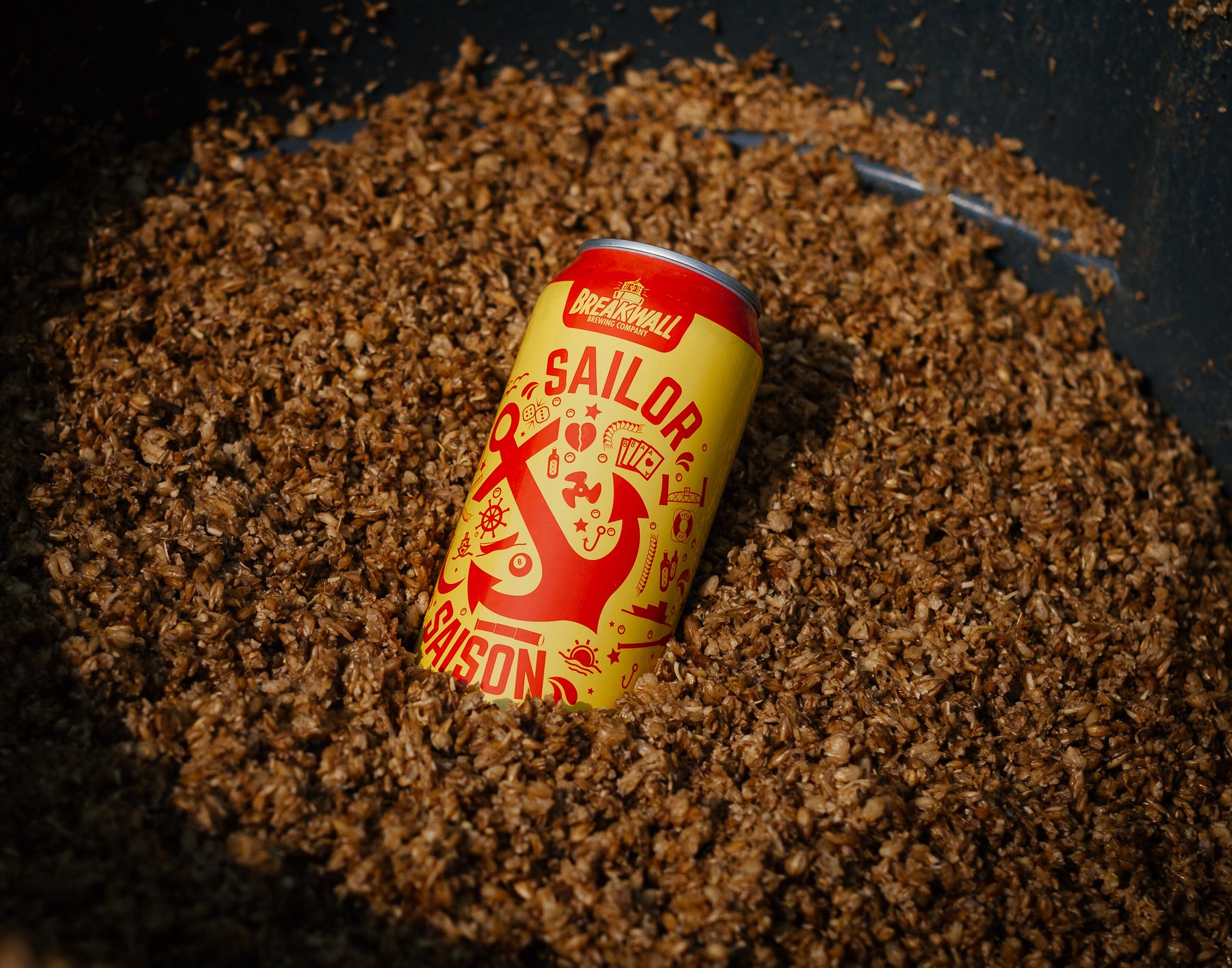
Many of the beers at Breakwall honour the iconic images of growing up around Port Colborne. (top) The Shrinking Mill Pale Ale gets its name from the town's grain mill. It has received notoriety due to an optical illusion created by an interplay of light, shoreline, water, and trees. As you approach, the mill seems to appear smaller and smaller. (bottom left) The Nine O'Clock Whistle IPA is named after Port Colborne's curfew whistle installed during WWII and continued to operate until the late 70s. (bottom right) The Sailor Saison celebrates Port Colborne’s marine heritage.
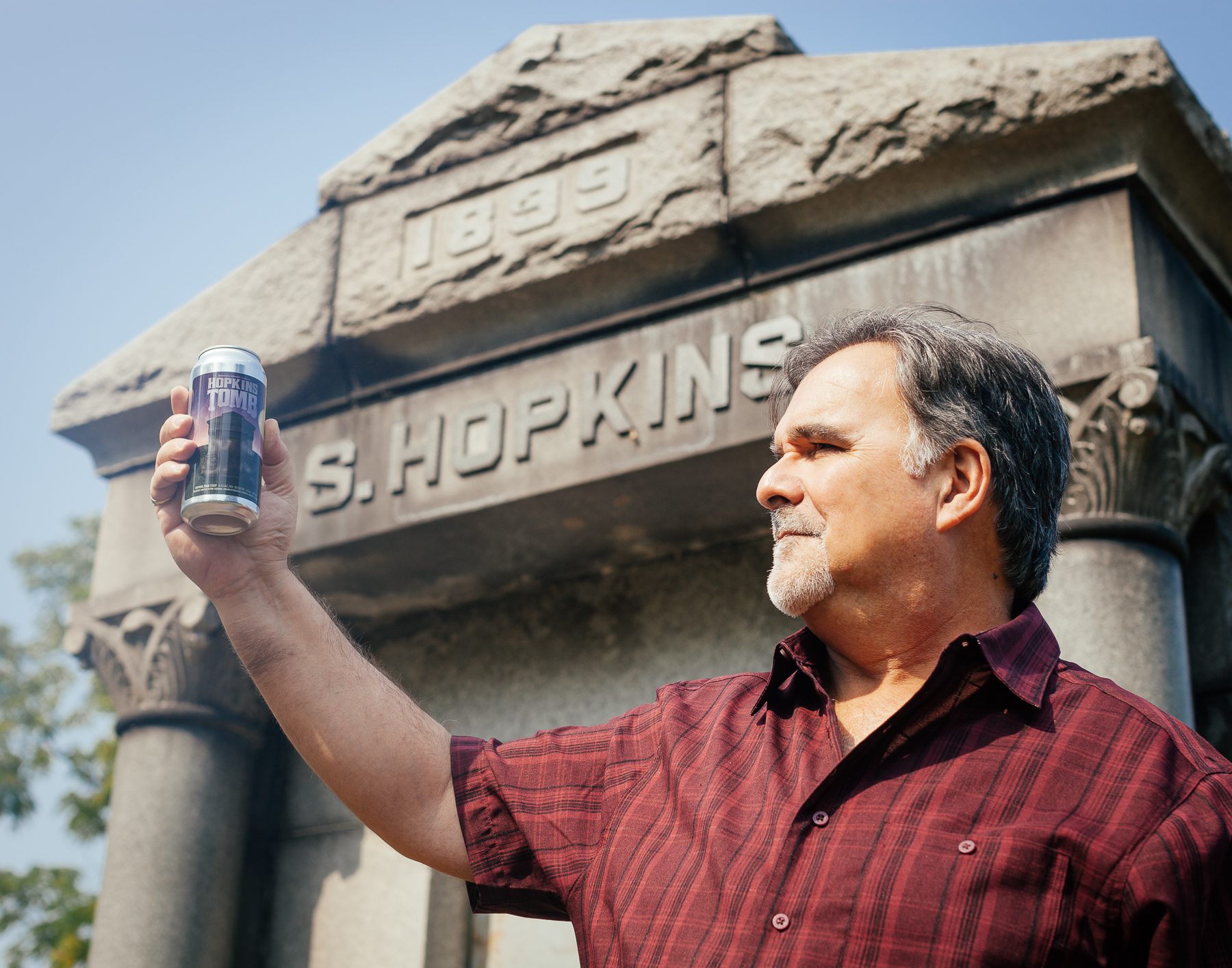
Fred holds his brewery's Hopkins' Tomb beer, in front of Hopkins' tomb. Hopkins was a local business person in Port Colborne, who “went boom and bust a few times.” The legend is that he was highly concerned about his legacy and wanted to make sure he had the cemetery’s most immense tomb. Samuel died before the tomb’s completion. So, his body waited in a regular burial for seven or eight years for its final resting place. Once they finished building the grave, his remains were exhumed and moved there. Local lore is that his spirit is not really in the tomb anymore. For this reason, it is a Halloween tradition for the area’s youth to visit at night, knock on the door and run around the tomb.

Conrad, one of Fred's four children, manages the brewery. Here he uses a refractometer - a tool to measure the projected alcohol content of the beer.
As a homeowner and a developer on the lake, Fred is concerned about the high water levels and significant erosion. Fred believes the situation will continue to worsen unless a long-term vision for waterfront protection is agreed upon internationally.
“We have lost a significant amount of property as a result of these ‘once in a hundred-year’ storms. The problem is that we have had four of these storms in the last four years! Breakwalls can’t stop these storms."

Fred recently spent over $100,000 installing a breakwall to protect his waterfront cottage. On Oct 31st, 2019, a severe storm hit the installation, destroying more than half of it.
Fred is also concerned about the lake’s recurring algae problem.
“To anyone saying there is no climate change, just come live on Lake Erie, and you will see it.”
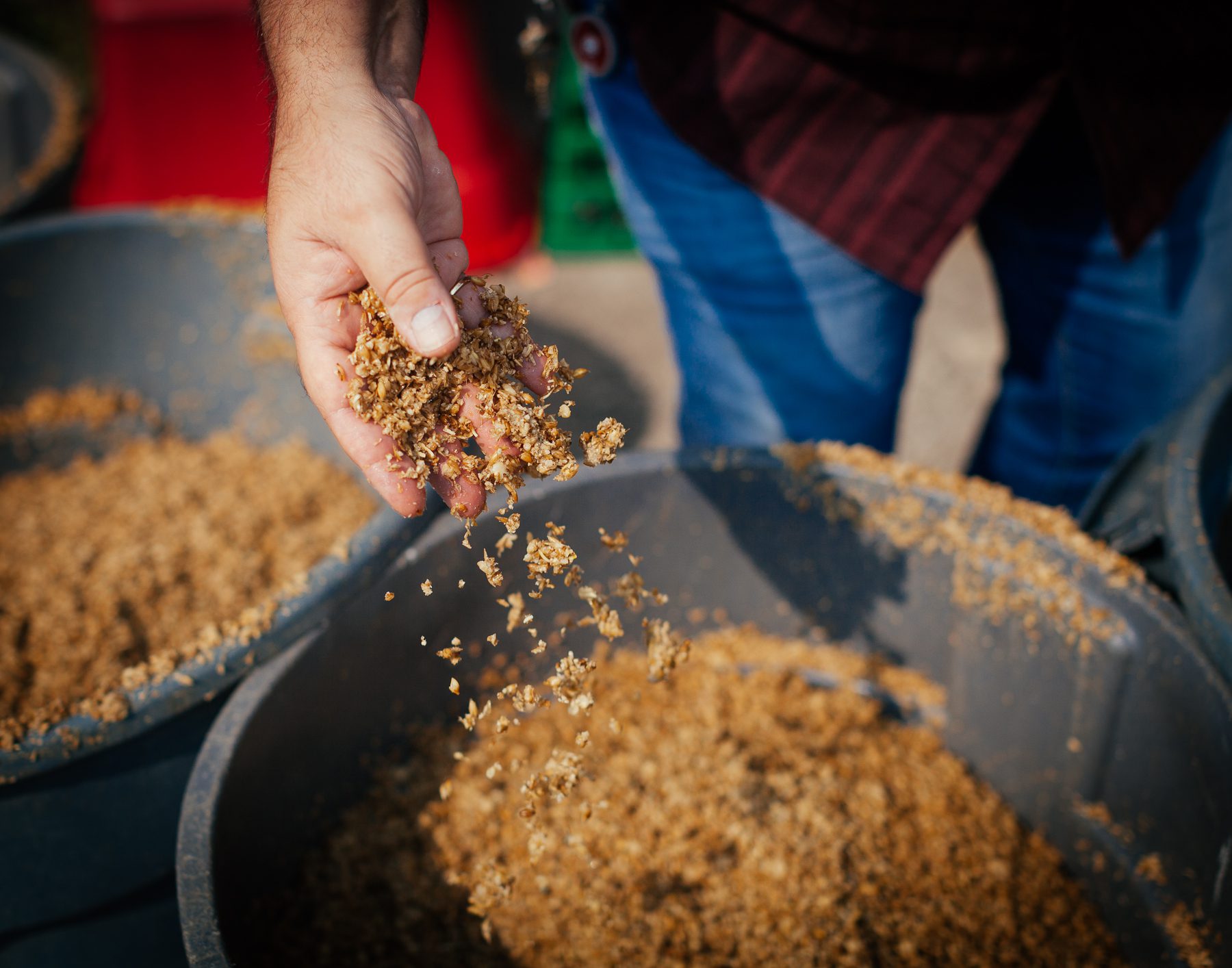
In an attempt to be more sustainable, all of the spent grains from the completed mash at Breakwall Brewery go to local farmers as cattle and hog feed.
With each passing year, Fred’s business philosophy and goals have shifted more and more local. Fred wants to establish and support local businesses that create more jobs around Port Colborne. The pandemic has only heightened this quest.
“My hope is that we continue to utilize the lake as a strategic advantage to grow the local economy.”
Read More
STORIES FROM THE LAKE
Sandra – Leamington
Take Action
Lake Erie and the millions of people who rely on it for their drinking water, local jobs, and so much more need your help.
The health of Lake Erie continues to decline. Action is needed more than ever to restore its health for current and future generations.
You can make a difference. Here’s how you can help protect the lake and support the people who are closely connected to it.
EXHIBITION BY: documentary photographer COLIN BOYD SHAFER in collaboration with ENVIRONMENTAL DEFENCE



